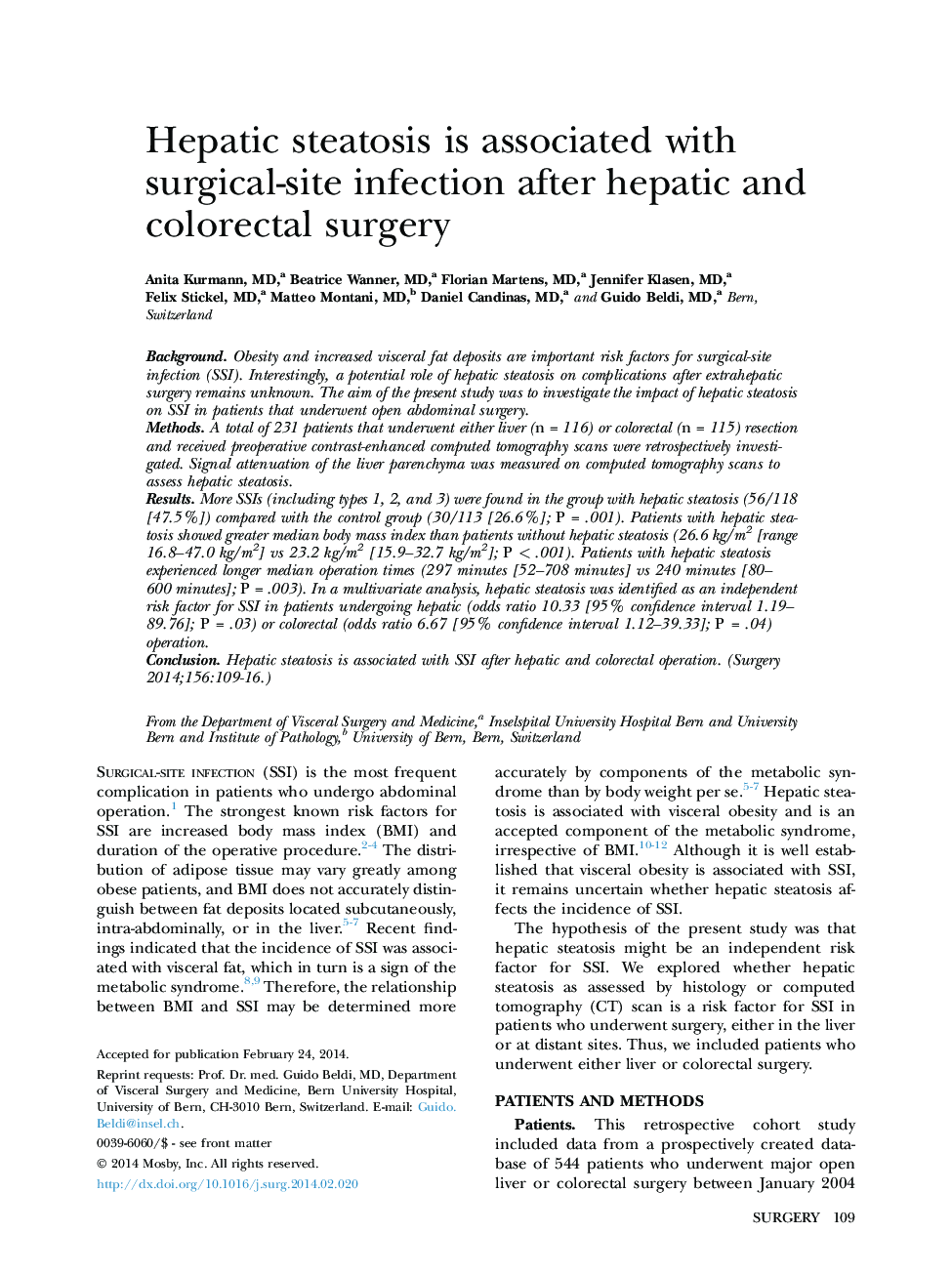| Article ID | Journal | Published Year | Pages | File Type |
|---|---|---|---|---|
| 4307951 | Surgery | 2014 | 8 Pages |
BackgroundObesity and increased visceral fat deposits are important risk factors for surgical-site infection (SSI). Interestingly, a potential role of hepatic steatosis on complications after extrahepatic surgery remains unknown. The aim of the present study was to investigate the impact of hepatic steatosis on SSI in patients that underwent open abdominal surgery.MethodsA total of 231 patients that underwent either liver (n = 116) or colorectal (n = 115) resection and received preoperative contrast-enhanced computed tomography scans were retrospectively investigated. Signal attenuation of the liver parenchyma was measured on computed tomography scans to assess hepatic steatosis.ResultsMore SSIs (including types 1, 2, and 3) were found in the group with hepatic steatosis (56/118 [47.5%]) compared with the control group (30/113 [26.6%]; P = .001). Patients with hepatic steatosis showed greater median body mass index than patients without hepatic steatosis (26.6 kg/m2 [range 16.8–47.0 kg/m2] vs 23.2 kg/m2 [15.9–32.7 kg/m2]; P < .001). Patients with hepatic steatosis experienced longer median operation times (297 minutes [52–708 minutes] vs 240 minutes [80–600 minutes]; P = .003). In a multivariate analysis, hepatic steatosis was identified as an independent risk factor for SSI in patients undergoing hepatic (odds ratio 10.33 [95% confidence interval 1.19–89.76]; P = .03) or colorectal (odds ratio 6.67 [95% confidence interval 1.12–39.33]; P = .04) operation.ConclusionHepatic steatosis is associated with SSI after hepatic and colorectal operation.
